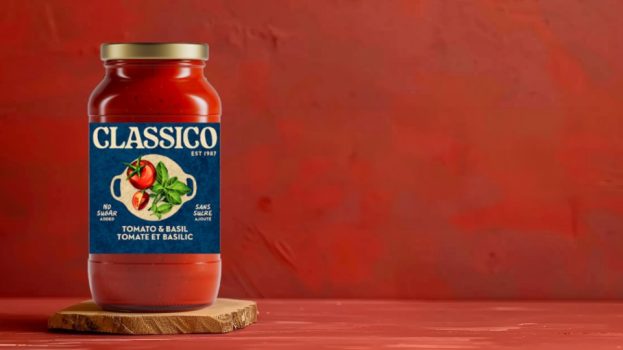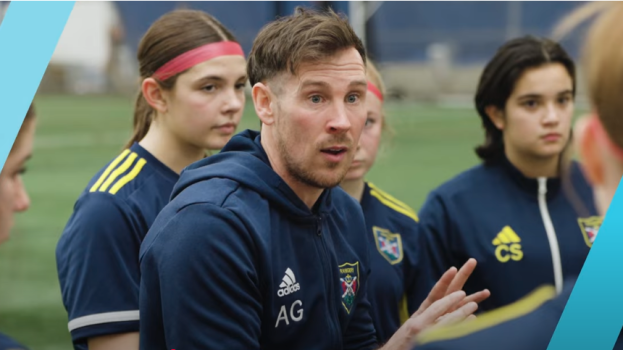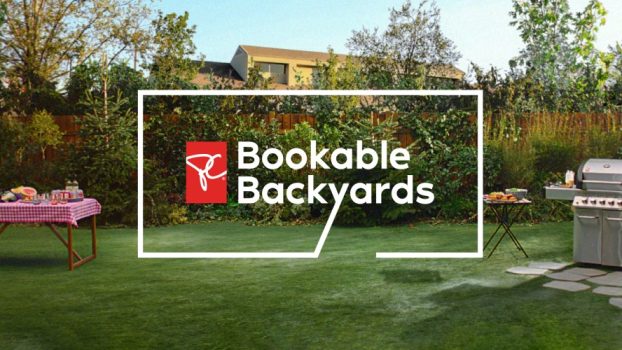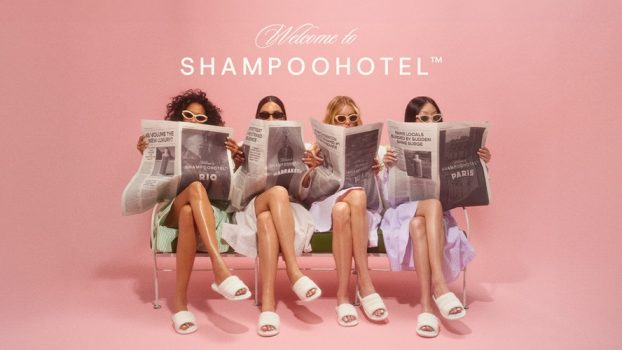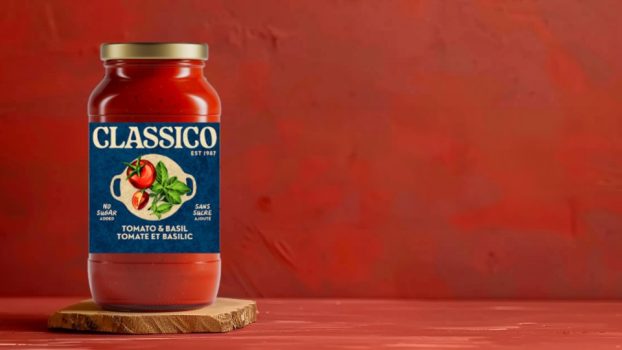Big time marketers like Molson, Labatt and Diageo (Smirnoff) are leveraging the emotional punch of sports without always paying for ‘official’ status. Others, like MasterCard, say shelling out for franchises such as the NHL is well worth the hefty price tag. In the end, say the experts, it’s not whether you go official or backdoor, it’s how well you use the tie-in to deliver a genuine message that harmonizes with your brand.
It’s not necessarily the élite, overpaid hockey players who shine in the Stanley Cup playoffs; sometimes it’s the guys with the big hearts. Likewise, it’s not always the marketer who pays big bucks for sponsorship rights with glitzy sporting properties like the NHL or the Olympics that dazzles consumers.
In fact, in recent years many marketers have found they can score with so-called ‘backdoor’ marketing affiliations – provided they are creative enough and as successful at provoking emotions as Toronto Maple Leafs forward Gary Roberts in a game-seven situation.
Certainly the NHL has seen ‘ambush’ marketing activity grow, in part due to companies’ current obsession with ROI. ‘When marketing budgets continue to be scrutinized, every dollar needs to be optimized,’ says Andrew Judelson, group VP of NHL Corporate Marketing in New York. ‘Companies that don’t have the [opportunity to invest] are thinking creatively about how to get around [rights] and associate with a sport or a brand.’
As marketers have become more sophisticated in their ability to do that, it has become more difficult for the NHL to police, particularly when it comes to under-the-radar, grassroots tactics. Technically, anyone who uses or mentions NHL trademarks can be legally challenged, so the organization deploys staff to conduct in-market visits, and its partners also keep an eye out for unsanctioned trademark use.
Judelson insists there’s a ‘difference in the value proposition of owning rights versus a generic association,’ because the NHL brand lends credibility and authentication. ‘Offering a chance to win tickets to the Stanley Cup playoffs – to a hard-core hockey fan, that’s different than a generic message. The investment pays out and the point of difference is significant and valuable.’ To prove the point, the NHL cites a 2002 study by Denver-based Bonham Group, which found that 94.2% of fans consider sponsors ‘very’ or ‘somewhat’ important to the NHL.
MasterCard sure hopes so. The Toronto-based credit card company is an official NHL sponsor, a fact it communicates through its advertising and promotions. For instance, on April 7, MasterCard debuted its Priceless Moments collector cards, each of which features a moment in Stanley Cup Playoff history. Customers receive one as an added value whenever they use their MasterCard in participating restaurants.
Four instant-win platinum cards offer a trip for two to a finals game, and the cards also drive fans to a Web site where they can enter a PIN to win a chance to see the championship game of the World Cup of Hockey, held in Toronto this fall.
A TV ad, featuring hockey greats Lanny MacDonald and Bobby Orr, outlines the initiative, which in turn supports the brand’s current Canadian ‘Priceless’ campaign featuring the Stouffville Clippers, a kids’ hockey club.
Tracy Hanson, VP marketing, says the goal of the promo is to reach out to hockey fans in a place where they can actually interact with the brand, as well as to leverage MasterCard’s hockey association. And, yes, she believes NHL sponsorship rights are well worth it. ‘If I didn’t have sponsorship rights, would I create a Priceless ad around hockey? Probably. Does our hockey spot resonate more because we are a sponsor of the NHL? I think so. Because we can play on it, and because we have access to jewel events in the hockey world, it makes a big difference from a branding perspective.’
Still, you can do a lot with less. Equipped with a media budget of less than $100,000, Smirnoff Canada has proven it’s possible to effectively tie into the Stanley Cup playoffs – without actually filling NHL coffers. In order to create purchase intent for its new Smirnoff Ice Triple Black, parent company Diageo created an interactive advergame last spring. The online hockey trivia contest, promoted on sports sites like TSN.ca, gave players the chance to win a trip to the Conference finals.
‘With Triple Black, we wanted to reinforce its masculinity,’ explains Toronto-based Emma Herlihy, brand manager for RTDs at Diageo. ‘Our brand is about being accessible, about kicking back and having a good time. Hockey is a social igniter in Canada and so is Smirnoff.’
Herlihy says the company stayed away from official sponsorship because it didn’t want to play too heavily in the beer arena. ‘We don’t want to be another beer; we want to do things slightly differently – a little bit more intelligent, a little bit wittier, a little bit sharper.’
Smirnoff was pleased with the results: the advergame was played by more than 42,000 unique users an average of 4.7 times. Furthermore, over 50% of participants cited Triple Black as one of their favourite brands, and 6.5% indicated intent for trial.
Similarly, Carlsberg beer gained points for a backdoor campaign inspired by the World Cup of soccer in 2002, back when the brand was still represented by Toronto-based Labatt Breweries of Canada. To get around paying for sponsorship fees, the ‘World Cup Attack Plan’ program avoided official trademarks, while it blanketed 50 hand-selected transit locations in Toronto’s Little Italy with images to give the impression of a life-size Carlsberg soccer team.
The media plan cost less than $300,000 and dramatically increased sales during the month-long tourney. (The program won Strategy Media’s Best Out-of-Home Plan award last year.)
Nigel Miller, director of PR for Labatt, won’t comment on the initiative, except to say that the brand had a longstanding relationship with soccer organizations and the ‘desire was to build on that series of associations around the World Cup.’
Interestingly, however, there has been some media speculation that Labatt recently walked away from its sponsorship of the Olympic Games in Athens because of competitor Molson’s ‘ambush’ tactics.
Miller gives another reason for Labatt’s decision and points out that the brewer is still negotiating with the Canadian Olympic Committee (COC) for the next Winter Games. ‘The Summer Olympics quite frankly aren’t as targeted to our audience as other properties to which we attach our brands – the Winter Olympics were a better fit, largely because of hockey. So it’s really about strategy, and we will be looking at those opportunities going forward,’ he says. ‘With respect to exclusivity, it’s not something we need to have with all of our properties [and that includes] the Olympics.’
Still, the fact of the matter is that Montreal-based foe Molson Canada has effectively sidestepped any arrangement with the COC by making a big splash with an investment in the See You in Athens Fund, a venture created by former athlete Jane Roos. (The See You in Athens ad campaign, by Toronto-based Taxi, created a stir last spring because of its depiction of athletes as panhandlers.)
On April 3, Molson donated five dollars for every 24 bottles of Canadian sold in restaurants and bars to the non-profit group. In fact, Molson has announced it will commit $500,000 towards helping athletes prepare for Athens, and has also handed almost $90,000 to the national rowing team. Between now and 2010, Molson will donate a minimum of $3 million to Canadian athletes.
That could potentially mean significant savings since Olympic sponsorship costs a minimum of one million dollars for four years – and that price climbs significantly in certain competitive categories, according to Mike Patterson, director of marketing for the Toronto-based COC.
But Patterson says the benefit of sponsorship is that companies can borrow brand equity from the Olympics, which has an array of attributes ranging from ‘leadership’ and ‘excellence’ to ‘fun’ and ‘fair play.’
One gets the sense that Molson’s approach doesn’t sit well with Patterson. ‘I think that ethically, if you’re looking for an association with Athens, you should be going through us,’ he says. ‘Swimming Canada or Rowing Canada has a lot to offer a sponsor, but you should make sure you don’t look like you’re sneaking in the back door to look like an Olympic sponsor.’
In other words, he says, it’s unethical to focus exclusively on the games in Athens in marketing communications; if a company is truly supporting a team, they should have made a big deal about the World Championships in Spain too. ‘I don’t think that somebody who doesn’t sponsor the Olympic games should be offering prizes to the Olympic games,’ he adds.
Patterson insists the COC stands by marketers who independently support athletes, but expects them to refrain from mentioning Athens or the Olympics. A good example is a current ad by Wal-Mart Canada. The Mississauga, Ont.-based retailer depicts canoeist Mike Scarola and makes mention of the fact that he’s on the national canoe team. According to the company, he’s an actual customer, and the spot, by Toronto-based Publicis, depicts the athlete relying on a Wal-Mart pharmacist to help him avoid over-the-counter and prescription drugs that are banned.
Says corporate communications manager Kevin Groh: ‘Although it’s certainly timely, we don’t actively seek out any of our stories, they naturally come to us. What all of them underline is Canadiana. Striving for the Olympics will strike a chord with virtually everyone across the country.’
And therein lies the rub. Whether an official sponsorship or not, it’s how a company leverages the relationship that matters most. According to Mark Harrison, president of Toronto-based sponsorship and event marketing firm TrojanOne, marketers should strive to make an emotional connection.
That’s especially true of ‘backdoor’ tactics, because there is a risk in jumping on the bandwagon for the sake of jumping on the bandwagon in that consumers will see through it – and a company can look cheap.
Harrison believes true sponsorship is the most effective way to deliver a genuine message. He adds: ‘I’ve seen a study recently that indicated approximately 43% of Canadians would buy a product from an Olympic sponsor. I’ve also seen proprietary client research, where consumers have said, ‘I’m absolutely more predisposed to a company that supports the Calgary Stampede.” However, he concedes that some marketers simply waste the opportunity.
He points to Visa, an official Olympic sponsor, as an example. ‘Their positioning is that Visa’s accepted in exclusive places, but if I’m not going to Athens, I’m not sure if I give two hoots. I’m not sure they’re really striking a chord with me.’
On the other hand, he says, MasterCard has hit all the right notes in promoting its hockey connection. ‘They take Bobby Orr, the greatest player of all time, along with Cassie Campbell, a female marquis player, and bring it down to a level that touches Canadians – hockey in Stouffville, Ont. They bring it to a place that’s powerful.’

